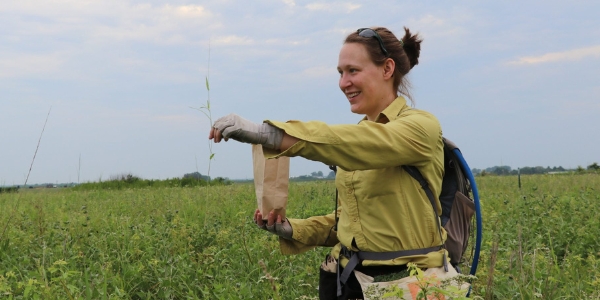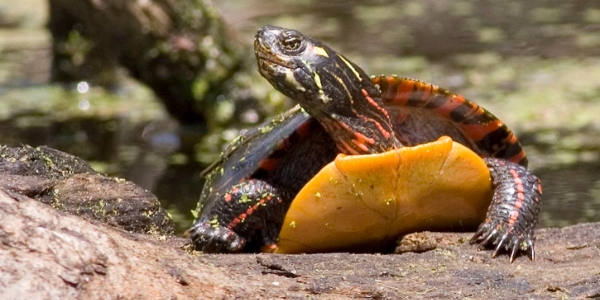Seeking solutions for spotted wing drosophila
Spotted wing drosophila (SWD), a small fly native to Asia that first appeared in Michigan in 2010, isn’t like most pests.
Populations of crop-damaging insects tend to have distinct generations. Not SWD. Several generations overlap and build through the year, attacking vulnerable agricultural crops and wild plants. The situation has created a major challenge for the Michigan berry and cherry industries.

Rufus Isaacs, a professor in the Michigan State University Department of Entomology and EEB core faculty member, was one of the first to discover the pest in the state 13 years ago. While researchers didn’t know much about SWD then, they’ve had to get up to speed quickly.
“SWD is so destructive because it can insert eggs into ripening fruit,” said Isaacs, whose work is supported in part by MSU AgBioResearch. “Larvae can be present in harvested fruit, which can be a big problem for producers. It is also able to reproduce so quickly to build up the population, and it can infest wild fruit outside of farms, creating a reservoir population that continually invades crop fields after they’re treated.”
After hearing about SWD arriving in California in 2008 and then being detected in Florida in 2009, concerns began to mount.
“Shortly after SWD was found in Florida, I went to a conference in Oregon where we discussed measures we may need to take to get ready for the pest,” Isaacs said. “We expected it would be in Michigan before too long.”
Sure enough, Isaacs was right. He received a grant from Project GREEEN — a partnership among MSU AgBioResearch, MSU Extension and the plant agriculture industries of Michigan — in 2010 to monitor for SWD. Isaacs worked with members of the MSU Fruit Team to set small plastic traps with holes that were filled with a cider vinegar lure.
In late 2010, SWD was collected from a site in West Michigan. At that point, the difficult work began and persists today. Research in Isaacs’ lab has been performed in partnership with mostly blueberry and raspberry growers.
The team has tested already-registered pesticides to determine their efficacy, as well as non-chemical controls such as pruning, mulching and physical exclusion methods, where growers place netting around and on top of crops as they begin to ripen.
As a result of this research, online resources have been created to assist growers with SWD identification, pesticide timing and other management strategies.
“We want to ensure we’re responsive to grower needs, first and foremost,” Isaacs said. “That’s why the pairing of research and grower education programs through MSU Extension is so valuable to our team.”
Dennis Vander Kooi, a blueberry grower and owner of Woodland Enterprises Berry Farms in Zeeland, Michigan, and his family have been working with MSU researchers for many years. He is also a board member of the Michigan Blueberry Commission (MBC), helping to set research priorities for the industry.
“Rufus is one of the nation’s leading researchers on this issue, and we’ve worked with others at MSU as well,” Vander Kooi said. “He’s run several experiments on our farm, and we’ve learned a lot from them. The MBC has supported this work and will continue to in the future as we look for effective ways to manage this pest.”
Vander Kooi said the blueberry industry is undergoing a rejuvenation in Michigan, adopting newer genetics and planting varieties that meet the demands of today’s consumers. This, in conjunction with SWD, makes it a critical time for growers as they look to protect an industry that contributes nearly $132 million to the state’s economy, according to the Michigan Ag Council.
“With the creation of the MBC in 2017, we got the opportunity to start advocating for more dollars for research, and MSU has been instrumental in that,” he said. “To date, we’ve supported more than $390,000 worth of research, much of that going to MSU, and leveraged an additional $600,000 in other funding.”
In addition to the MBC, Project GREEEN has been a significant supporter of Isaacs’ SWD efforts, along with state funding through the Specialty Crop Block Grant program and national projects funded by the U.S. Department of Agriculture (USDA).
Read the full story in The College of Agriculture and Natural Resources



